Nineleaf Biscuitroot, Nineleaf Desert Parsley, Nine-leaf Lomatium
Lomatium triternatum var. triternatum
Synonyms: Lomatium simplex var. leptophyllum, Lomatium triternatum var. alatum, Lomatium triternatum var. macrocarpum, Lomatium triternatum ssp. triternatum, Lomatium triternatum ssp. triternatum var. triternatum
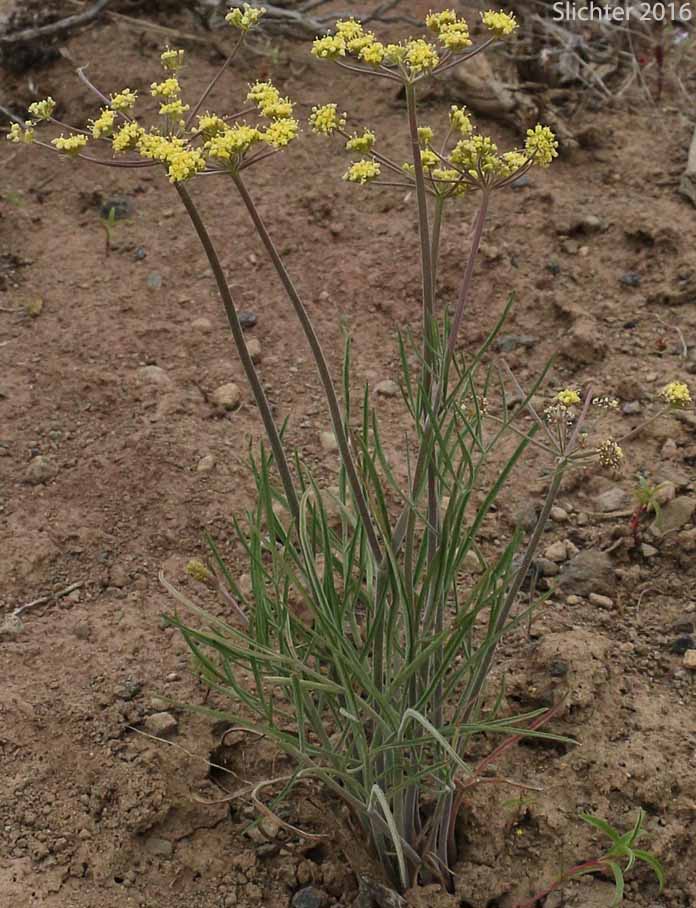
Nine-leaf desert parsley (variety triternatum) as seen
along Silver Lake Road at the eastern boundary to Klamath Marsh NWR several miles southwest of the headquarters compound..........May 20, 2016.
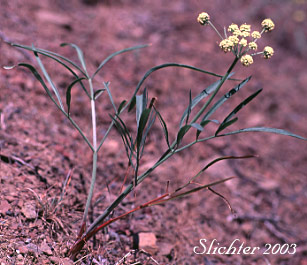 Nine-leaf
desert parsley (variety triternatum) as seen along US 97 east of Satus
Pass in south-central Washington.......May 10, 1997. Note the tri-pinnately compound
leaves with long, narrow leaflets.
Nine-leaf
desert parsley (variety triternatum) as seen along US 97 east of Satus
Pass in south-central Washington.......May 10, 1997. Note the tri-pinnately compound
leaves with long, narrow leaflets.
Characteristics:
Nine-leaf desert parsley is a perennial wildflower
with one to a few erect stems arising from 20-80 cm high from a narrow, elongate
taproot. The herbage is covered with fine, short hairs. The leaves are mostly
basal, although some may be present at the middle or upper parts of the stems.
The leaves are ternately or ternate-pinnately compound 2-3 times, and cleft
into long, narrow segments or leaflets from 1-10 cm long.
The inflorescence is an umbel with 6-18 stems of
unequal length supporting the umbelets, these stems measuring up to 3-6 cm long.
The flowers are yellow. The fruits are oblong to broadly elliptic with narrow
to broad wings, and measuring from 7-15 mm long. The bracts below the umbelets
are filiform or are absent.
Similar Species:
Nine-leaf desert parsley could be confused with
slender-fruited desert parsley (L. leptocarpum).
The latter species has roots that have elongated or beaded swellings while the
former has thick roots which lack the swellings. The latter species is also
often 4 times pinnately compound with shorter leaf segments, while the nine-leaf
desert parsley is tri-pinnately compound with longer, leaf segments (with the
exception of L. triternatum var. anomalum, which has shorter,
borader segments).
Habitat:
Nine-leaf desert parsley may be found on open slopes
and in dry to fairly moist soil in meadows from the lowlands to moderate elevations
in the mountains.
Range:
Nine-leaf desert parsley may be found from southern
British Columbia south through Washington and Oregon on both sides of the Cascade
Mts. to California and east to southern Alberta, Montana, Colorado and Utah.
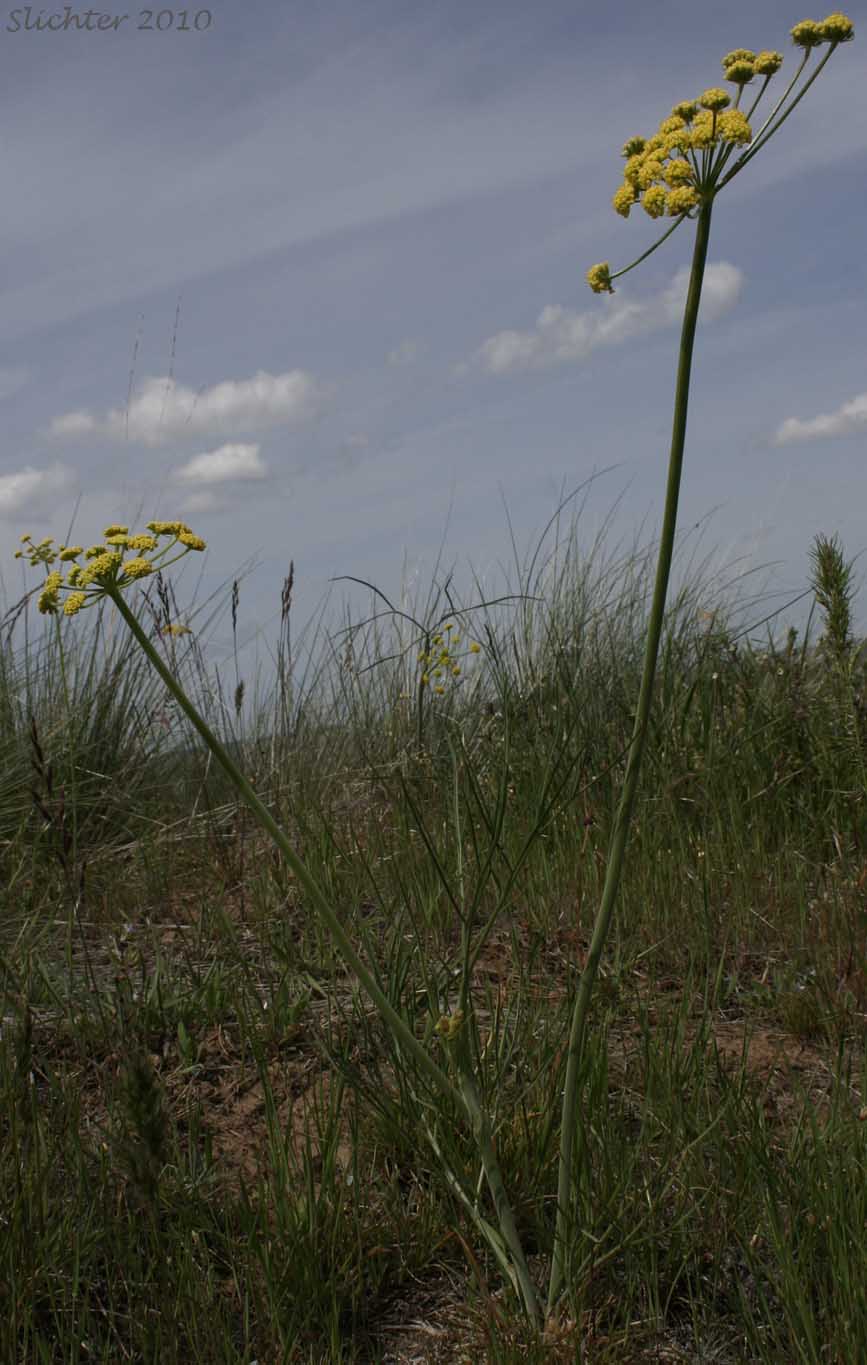
Nineleaf biscuitroot as seen in grasslands at the Lawrence Memorial Grasslands several miles southwest of Shaniko, OR...........May 15, 2010.
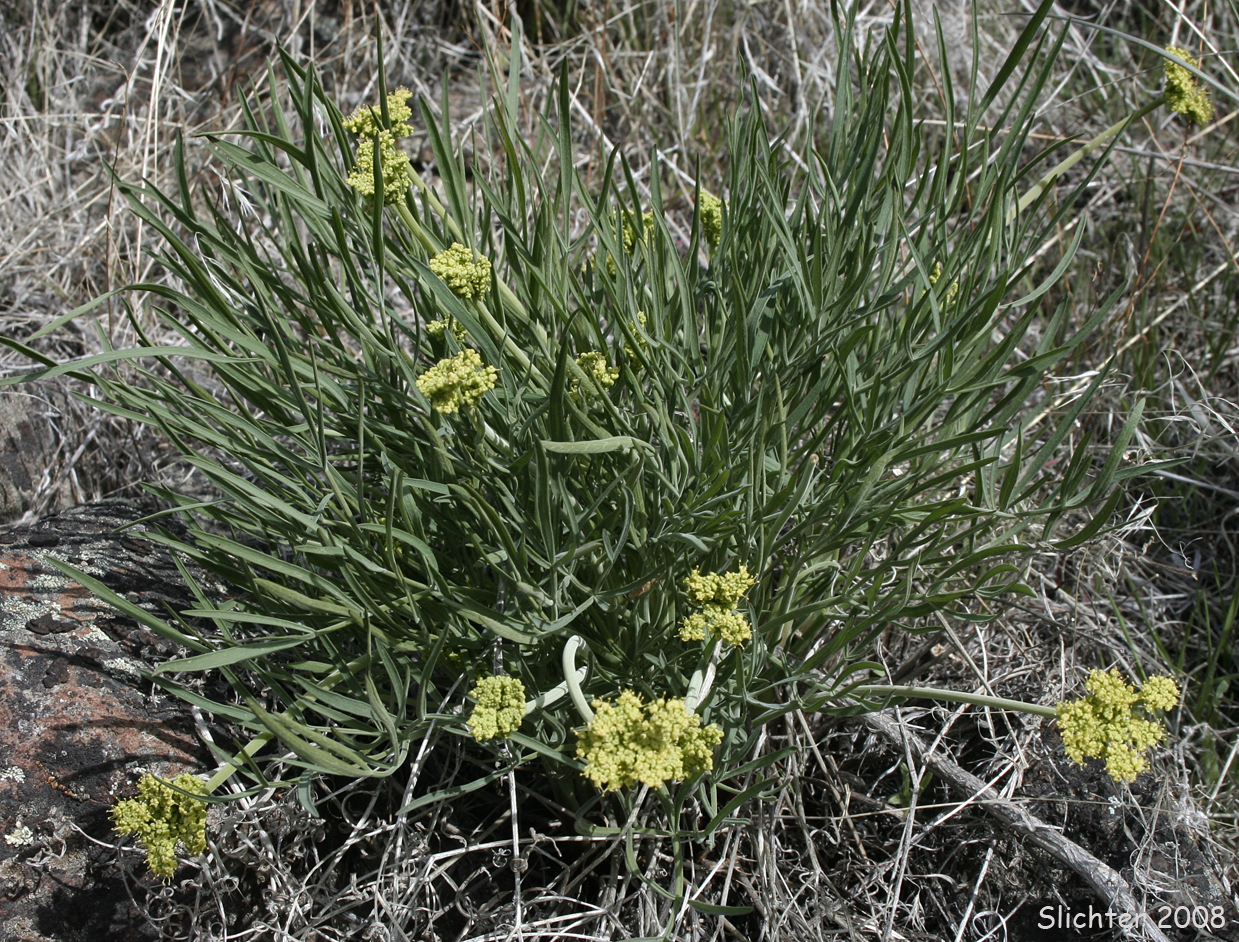
This photo shows nine-leaf desert parsley as seen along the Yakima Skyline Trail to the north of Selah, WA............March 22, 2008.
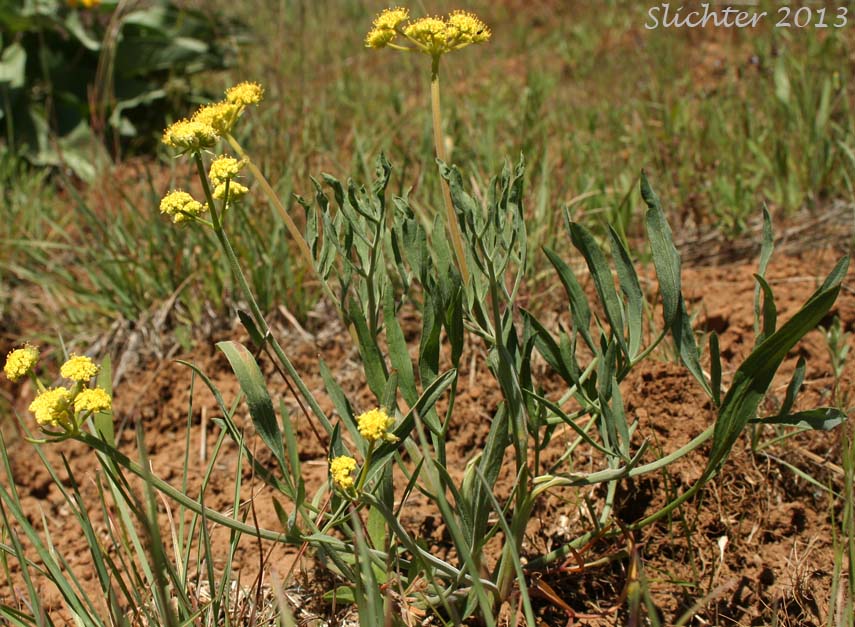
Nine-leaf desert parsley as seen at a small borrow pit along Road 35 about one-half mile uphill from the southern forest boundary on Table Mountain, Wenatchee National Forest..........June 4, 2013.

The photo above shows nineleaf desert parsley (variety triternatum) as seen on Selah Butte, several miles to the north of Yakima, WA............April 24, 2007.
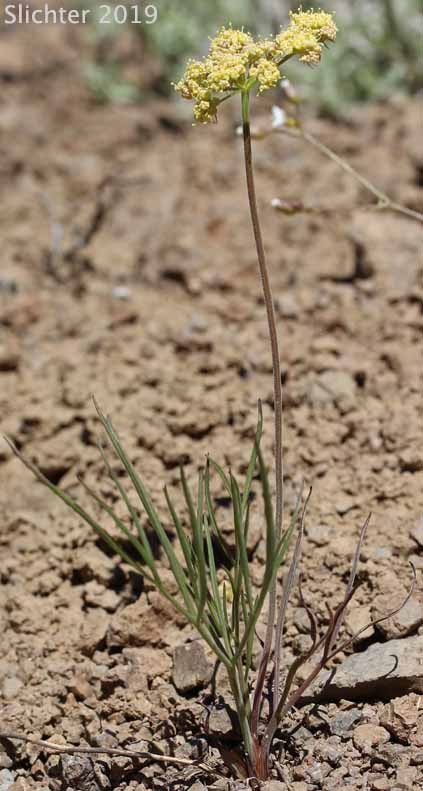 -
- 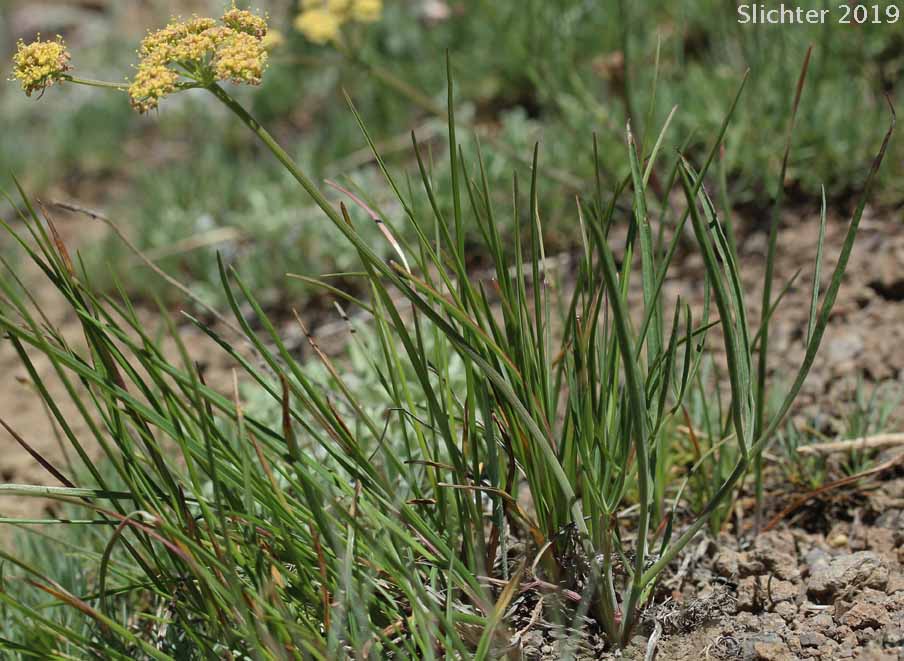
Nineleaf desert parsley still in bloom next to snow drifts atop the summit ridge between Drake Peak Lookout and Light Peak, Fremont-Winema National Forest.......June 29, 2019. DNA tests need to be performed on samples from central Oregon to determine whether these are now Lomatium brevifolium or still Lomatium triternatum.
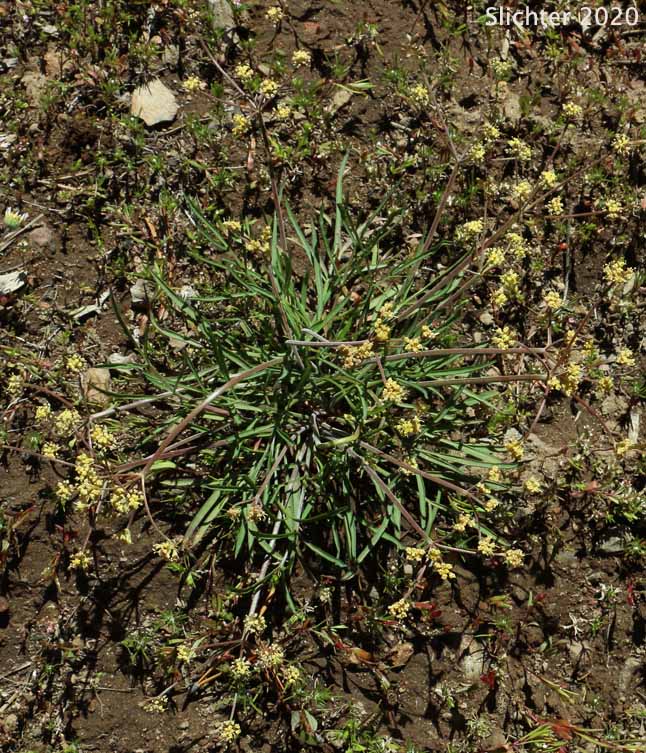 -
- 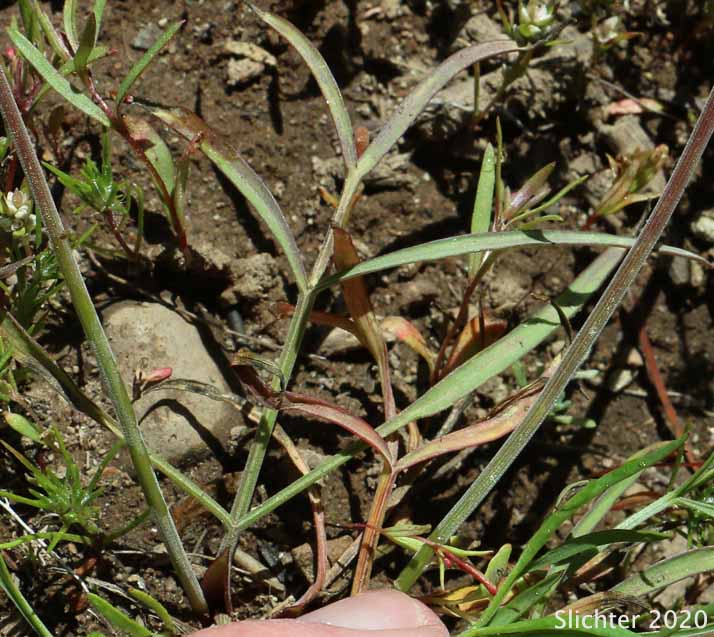
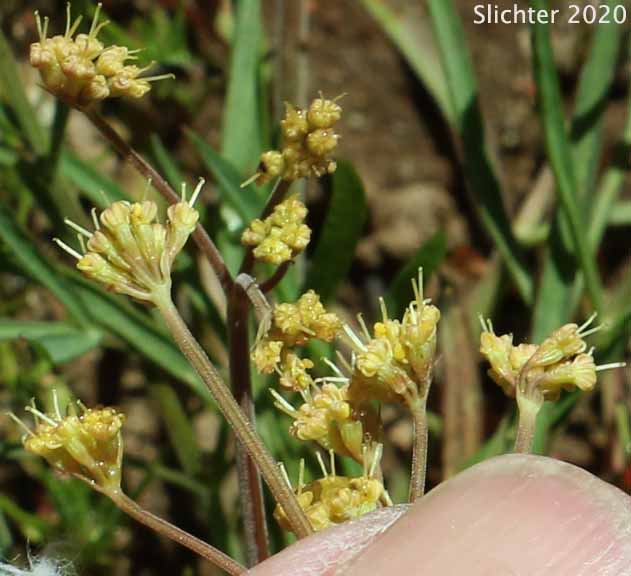 -
- 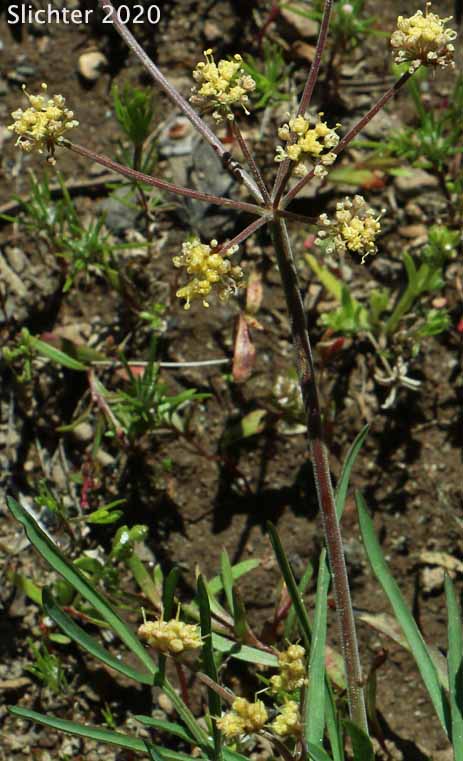
Nineleaf desert parsley in bloom along the Hanan Trail #142, Fremont-Winema National Forest......June 17, 2020.

The photo above shows nine-leaf desert parsley
(variety anomalum) as seen atop Cabbage Hill along the old highway east
of Pendleton, OR.............May 29, 1999.

The photo above shows the inflorescence of
nine-leaf desert parsley (variety anomalum) as seen atop Cabbage Hill
along the old highway east of Pendleton, OR.........May 29, 1999.
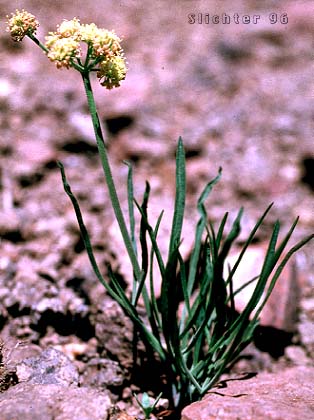
Nine-leaf desert parsley (variety triternatum) as seen
at higher elevations on Hart Mt., Hart Mt. National Antelope Preserve in south-central
Oregon.
Paul Slichter
 Nine-leaf
desert parsley (variety triternatum) as seen along US 97 east of Satus
Pass in south-central Washington.......May 10, 1997. Note the tri-pinnately compound
leaves with long, narrow leaflets.
Nine-leaf
desert parsley (variety triternatum) as seen along US 97 east of Satus
Pass in south-central Washington.......May 10, 1997. Note the tri-pinnately compound
leaves with long, narrow leaflets.

